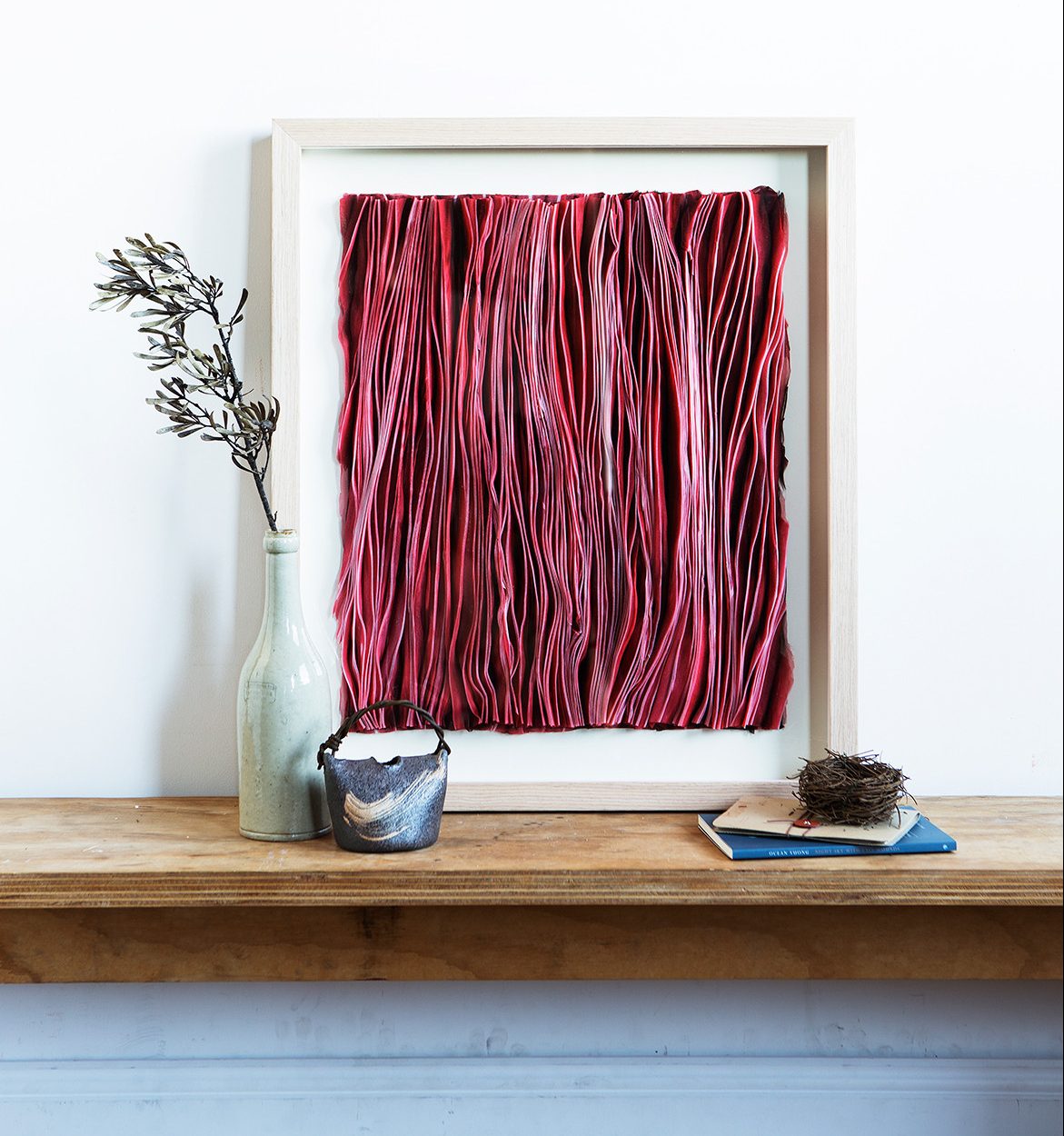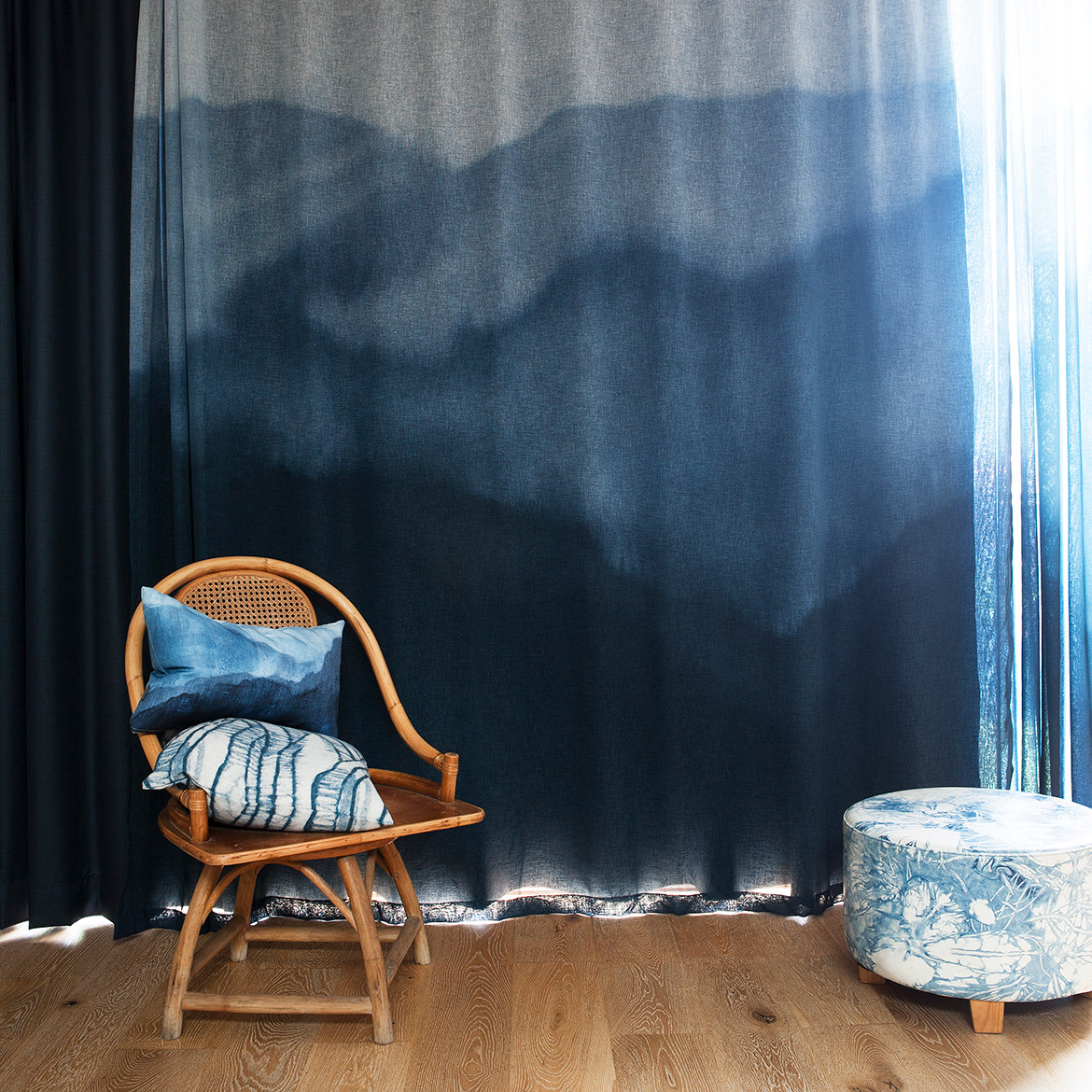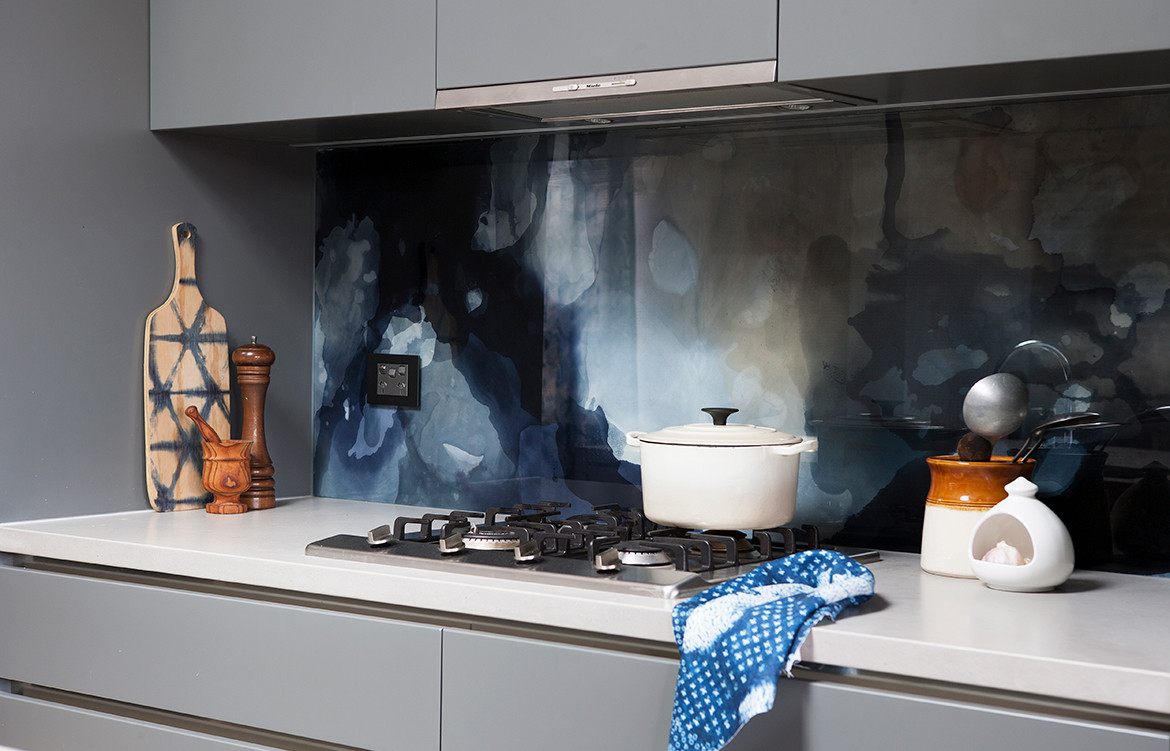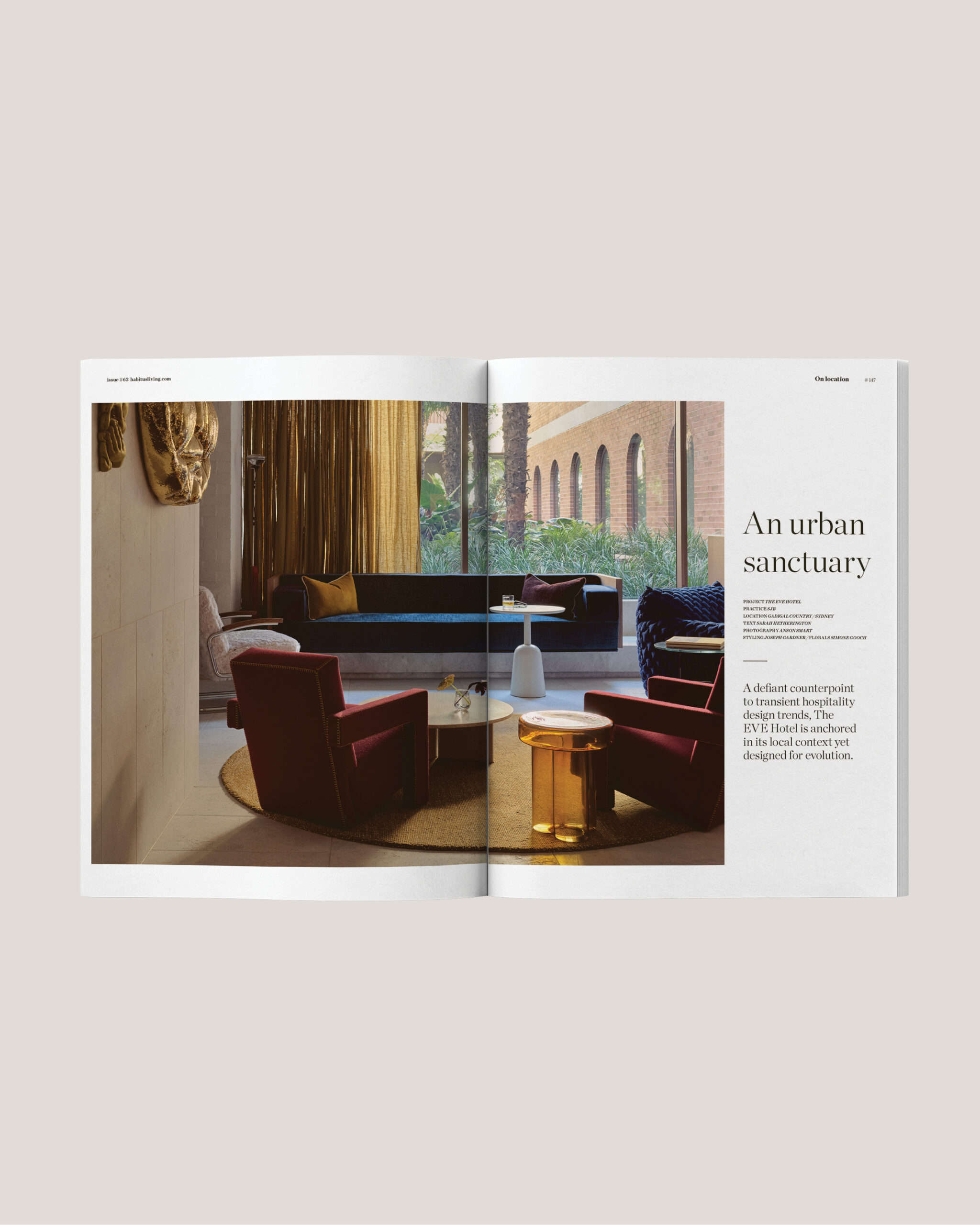Habitus: What inspired you to start Shibori?
Karen Davis and Pepa Martin: Shibori began in 2005, the year after studying textiles at East Sydney where our friendship was formed by our shared rebellion of traditional textile methods. We both had prior design jobs and were bored with trends and loved the excitement of unbinding hand-dyed pieces, it’s addictive and exciting and screams creativity. The satisfaction of making functional art is what spurred us into starting the Shibori label as we found a missing niche.

What inspires your colour palettes, textures, and patterns?
Colour is such a personal thing and the psychology of what steers one to a colour is a whole science in itself. We began with two very different personalities and over the years our true colours came out. Colour is everything to us, unlike many designers who find they have a limited palette, we can’t help but flirt with new colours and dirtying them down to satisfy our senses.
Making colour is like cooking a delicious meal, bits of this and that, and test and rework, it is sugar for the soul delivered through the eyes and the texture of fabric elevates the experience.
Perhaps it’s our Australian lifestyle but we find the muted moody colours work beautifully with the bled lines inherited by the dyeing process.
It’s impossible not to be inspired by other cultures while travelling and prior to 2019 we frequented many countries to taste their colours. It is evident from the recent additions of dirty pinks and purples to the collection that Marrakech had an impact on us with its city dancing in colour that a photographic image could only offer a glimpse of.
The patterns we share mostly began as a shibori interpretation with some sort of wabi-sabi folding, wrapping or binding and then we become the medium for the fabric to meet the dye. It begins with an idea and then becomes an adventure and starts to make sense as we go. Rarely does the story end the way it starts. It’s often a union of both of us starting with colour choices and base fabric and then a decision of technique and enthusiasm builds and there it is baked. Metaphorically.

Tell us about the process – what’s involved, how do you work together?
We are both “creative types” and would always choose the high of making over the mundane life ‘stuff’. It was only natural that we pursue everything the shibori technique had to offer. As any business, you are driven by the client and their needs, and when approached to produce a six-metre giant heat set light for a venue it was the sort of challenge we could not refuse. It might be the oversized tourist sites in Australia or something, but we just love the challenge of making oversized pieces.
Heat set shibori is sculptural fabric, ie fabric with form and dimension. The heat set has since found its way into our collection with various commissions for heat set artworks. Making heat set artworks is very decadent, we again start with a colour story and then produce many metres of heat set silk that holds its bound form when dried and unbound. The sculpted silk moves with motivation and is held in place with tiny stitches. Multiple sheer layers build depth and this is what makes the artwork so unique.

How do you balance personal and professional life?
Work life balance I imagine is difficult for most business owners, we have made Shibori our life and consider teaching workshops part of our downtime when we get to play with other people and see their personality through creating. Our interests tend to evolve around fabric which is wound into every culture and hence when travelling we tend to explore as many textile-oriented places as we can, in search for differences and similarities.

What’s something you wished you had known before setting out on this career path?
There is nothing we wish we had known because the joy has come from the learning. I remember wanting to know what to, and not to do, however it’s different for everyone. With all life experiences – they have to be your own and are felt differently. If there was one answer, it would be wonderful to share but, it is all about trusting your instincts.
Can you talk about your workshops, why do you think it’s important to teach and what can people learn?
Workshops are our way of sharing the creative experience and the joy of making but we also have always wanted to keep the tradition of craft and shibori alive in the world. Shibori has been around for over 4000 years and prior to social media we did not realize how many people were interested in and needed a creative outlet. Often people come with the belief they are not creative and leave with a bag of wonderful pieces and a new outlook.
Shibori
shibori.com.au
We think you might like this story about Rive Roshan



